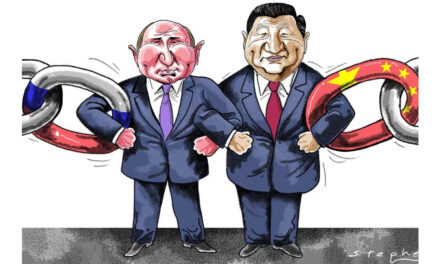
Inflation: The Danger of a Booming Economy
Although most financial analysts are optimistic about the future of U.S. economy under the Trump administration, the more consumers spend the more inflation becomes an issue.
The price of consumer goods is on the rise.
The Labor Department reported at in December consumer prices increased by .03%. Compared to last year, food and energy pricing is up by 1.8%, which is a 0.1% increase from the previous month.
While there was a 1.1% decline in sales of clothing and accessories, sporting goods, and at department stores, sales of furniture, home furnishing stores, and online increased.
The cost of medical care increased by 0.3% and the shelter costs rose by 0.4%.
As the price of goods and services increase, the U.S. dollar depreciates. A higher inflation eats away at the savings of retired folks and the funds of those on a fixed income.
With the new GOP tax plan, which will evidently foster economic prosperity and the unemployment rate being at an all-time low, the Federal Reserve has said that this year there will be three rate increases. These will slow down the economy so it doesn’t burst.
“The Committee expects that economic conditions will evolve in a manner that will warrant gradual increases in the federal funds rate; the federal funds rate is likely to remain, for some time, below levels that are expected to prevail in the longer run,” said the Federal Open Market Committee in a statement in December.
So how does the increase rate impact the economy?
When the Fed increases increase rates, often the prime and credit card rates also increase. The U.S. national debt increases too.
Increased interest rates led to a decrease in business profits since the cost of capital needed to expand is higher. The housing marketing will also see a slow-down, along with consumer spending because there are less borrowing rates available.
Ultimately, the Fed’s actions in 2018 will impact the U.S. economy. If the committee doesn’t play its cards right, they could risk a recession.
But this recent report will likely keep the Fed on track with its increases in interest rates expected to start in March.
“The economy is doing quite well right now … and well enough for the Fed to feel compelled to take steps to take the edge off before inflation truly becomes problematic,” said Jim Baird, chief investment officer at Plante Moran Financial Advisors to Reuters.
The rate at which inflation strengthen last year was consistent with the Fed’s predictions.
“The increase in core inflation topped expectations for a 0.2 percent rise. A separate release from the Commerce Department revealed retail sales rose in December following an upwardly revised gain in November,” writes Financial Times. “Following the data, the yield on the policy-sensitive two-year Treasury climbed above 2 percent for the first time since the financial crisis, while the benchmark 10-year yield rose 5.6 basis points at 2.58 percent. Meanwhile, the US dollar index trimmed its losses immediately after the data to trade 0.46 percent lower at 91.43.”
“We view the report, on balance, as helping to confirm FOMC members’ suspicions that disinflation from 2017 will likely prove transitory. Alongside a forecast of above-trend growth and a declining unemployment rate, today’s inflation data are consistent with our outlook for further normalization of Fed policy. We expect four 25 basis-point rate increases in 2018 with the next hike coming at the March FOMC meeting,” said Michael Gapen, U.S. economist at Barclays to FT.
Author’s note: This report proves that an increase in rates is probably the best move for to keep the economy healthy. The higher interest rates will slow down the economy and tempers inflation, while giving savings accounts a better rate. This can be balanced by the Fed so that prosperity increases for all.

























Frank and Mike covered the main points. Larry, of what use is backing someone's economic policy in part when the…
I agree Seth: NOT MAGA! heh, heh. perspective, it's a bootiful thing.
Not MAGA.
Yup, Larry, you got me although you really didn't have to be such a dick about it. I just read…
Larry, Before you open your mouth again (and continue to make yourself look foolish), I suggest you educate yourself on…